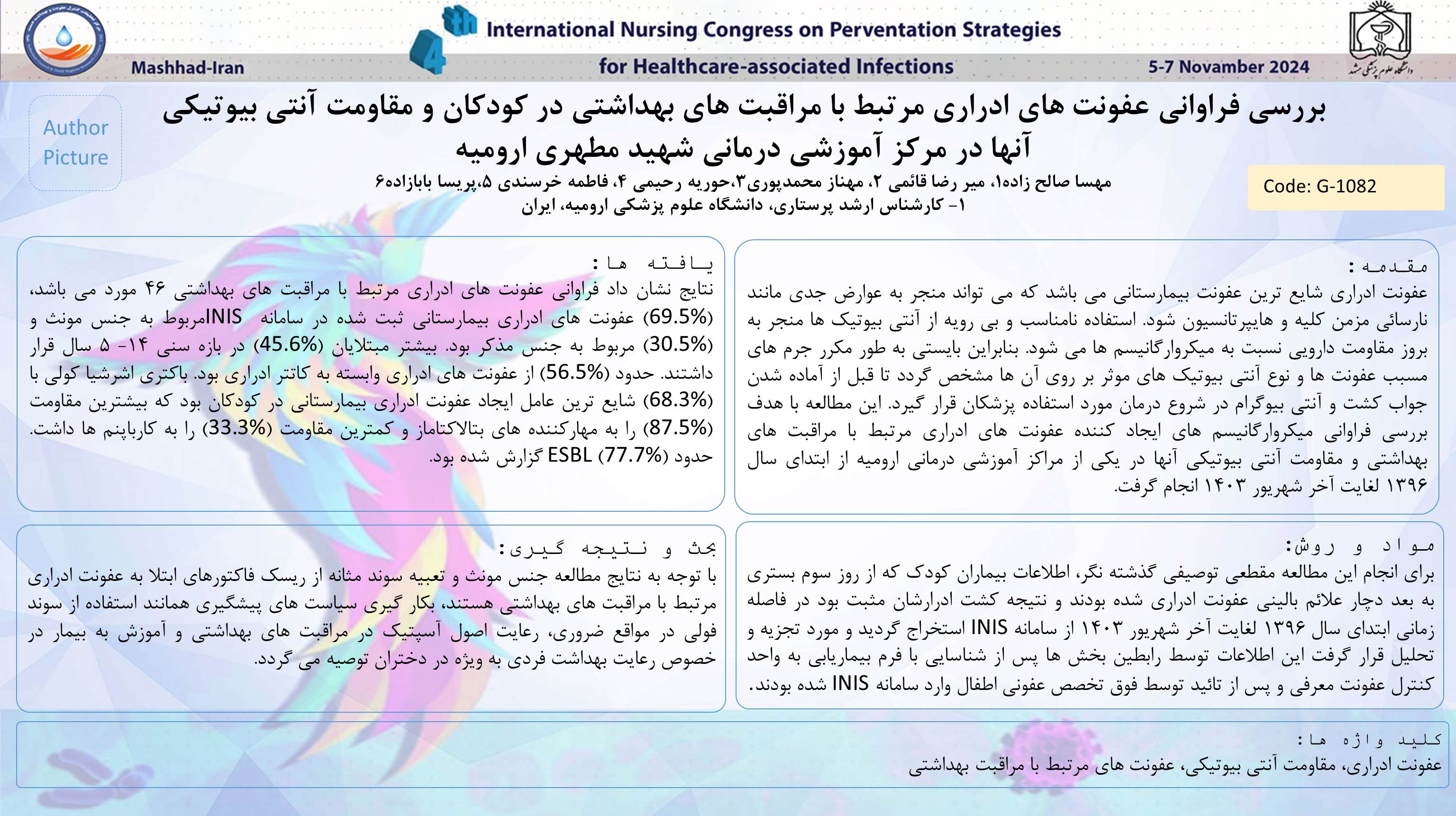بررسی فراوانی عفونت های ادراری مرتبط با مراقبت های بهداشتی در کودکان و الگوی مقاومت آنتی بیوتیکی آنها در مرکز آموزشی درمانی شهید مطهری ارومیه
کد: G-1082
نویسندگان: Mahsa Salehzadeh © ℗, Mir Reza Ghaemi, Mahnaz Mohammadpouri, Hooriyeh Rahimi, Fatemeh Khorsandi, Parisa Babazadeh
زمان بندی: زمان بندی نشده!
دانلود: دانلود پوستر
خلاصه مقاله:
خلاصه مقاله
Introduction: Urinary tract infection is the most common hospital-acquired infection, which can lead to serious complications such as chronic kidney failure and hypertension. The inappropriate and excessive use of antibiotics leads to the development of drug resistance in microorganisms. Therefore, it is necessary to frequently identify the pathogens causing infections and the types of antibiotics effective against them. This study aimed to investigate the frequency of microorganisms causing healthcare-associated urinary tract infections and their antibiotic resistance pattern in Shahid Motahari educational treatment center in Urmia from the beginning of 2017 until the end of September 2024. Method: For this retrospective descriptive cross-sectional study, information on pediatric patients who developed clinical symptoms of urinary tract infection from the third day of hospitalization onward and had positive urine cultures was extracted from the INIS system between the beginning of 2017 and the end of September 2024. This information was analyzed after being identified by department liaisons and introduced to the infection control unit using a disease identification form, and subsequently entered into the INIS system after approval by a pediatric infectious disease specialist. Findings: . The results showed that the frequency of healthcare-associated urinary tract infections in children is approximately 46 cases. 69.5% of hospital-acquired urinary infections recorded in the INIS system were related to females, while 30.5% were related to males. Most of the patients (45.6%) were in the age range of 5 to 14 years. Approximately 56.5% of urinary infections were related to urinary catheters. Escherichia coli, with a prevalence of 68.3%, was the most common cause of hospital-acquired urinary infections in children, showing the highest resistance (87.5%) to beta-lactamase inhibitors and the lowest resistance (33.3%) to carbapenems. Approximately 77.7% ESBL was reported. Conclusion: Considering the results of the study, females and the use of urinary catheters are risk factors for healthcare-associated urinary tract infections. It is recommended to implement preventive policies such as using Foley catheters only when necessary, adhering to aseptic principles in healthcare, and educating patients about personal hygiene, especially for girls.
کلمات کلیدی
Urinary tract infection, Antibiotic resistance, Healthcare-associated infections
